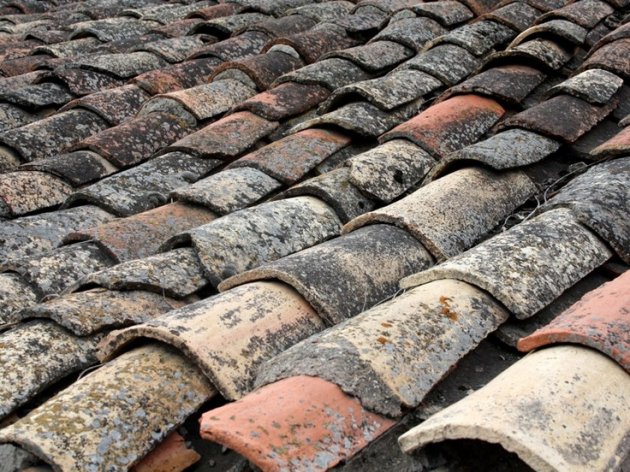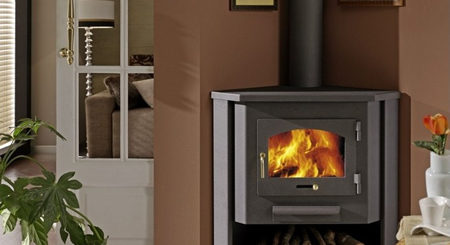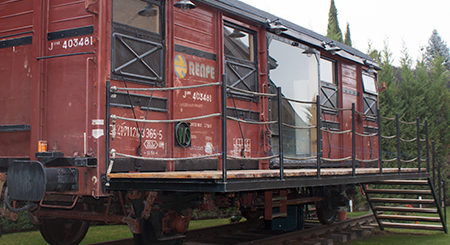How to Repair Roof Leaks – Causes, Diagnosis, and Effective Solutions

<!– KEYWORD: roof leaks repair –>
<h2><strong>I Have Roof Leaks: How Can I Fix Them? 🏠💧</strong></h2>
<p>The roof is one of the most delicate and exposed parts of any building.
Even the smallest failure in waterproofing can cause <strong>leaks that are hard to detect</strong>.
It is common to find leaks and moisture problems even in new constructions, usually due to <strong>poor workmanship or inadequate waterproofing</strong>.
In this article, we explain how to <strong>identify and repair roof leaks</strong> safely and effectively.</p>
<p><img style=”display: block; margin-left: auto; margin-right: auto;” title=”How to repair roof leaks” src=”https://vilssa.com/uploads/images/tejado_de_teja.jpg” alt=”Diagnosis and repair of tile roof leaks” width=”630″ height=”472″ /></p>
<h3>🔎 Types of Roofs and Common Causes of Leaks</h3>
<p>When we talk about roofs, we usually refer to <strong>pitched roofs</strong> made of tiles, slate, or other small overlapping materials.
In traditional roofs, tiles were simply laid on top of each other without any fixing elements, relying on their weight to prevent displacement by wind.</p>
<p>Traditionally, <strong>ceramic tiles and slate</strong> served as the only waterproofing layer.
Today, modern roofs include several layers: an exterior covering (tiles), a <strong>thermal and waterproof layer</strong>, and a supporting structure that can be heavy or lightweight depending on the building type.</p>
<h2><strong>How to Repair Roof Leaks Step by Step</strong></h2>
<p>If you’ve noticed <strong>water leaking from your roof</strong>, don’t panic.
The cause is often simpler than it seems, and with proper precautions, you may be able to fix it yourself.
However, safety is essential: use a <strong>harness, rope, and a secure anchor point</strong> before climbing onto the roof.</p>
<p><img style=”display: block; margin-left: auto; margin-right: auto;” title=”Tile roof leaks and repair” src=”https://vilssa.com/uploads/images/tejado_de_teja_2.jpg” alt=”How to repair tile roof leaks” width=”630″ height=”366″ /></p>
<h3><strong><u>Diagnosing the Leak</u></strong></h3>
<p>The first step is to <strong>locate the source</strong> of the leak.
In about 90% of cases, leaks are caused by problems in the roof covering — <strong>broken, displaced, or poorly placed tiles</strong>.
The remaining 10% are due to <strong>defective joints or intersections</strong>, such as chimneys, gutters, or skylights.</p>
<p>To pinpoint the cause, perform a <strong>water test</strong>: use a hose to pour water on specific areas for a prolonged time, starting with complex intersections (chimneys, gutters).
If no leak appears, move on to testing larger roof sections.</p>
<p>Sometimes a quick visual inspection is enough: blocked gutters, accumulated leaves, or even birds’ nests can cause overflows and water seepage.
Large leaks are often caused by <strong>clogged gutters</strong> that redirect rainwater into the roof structure.</p>
<table style=”background-color: #edebeb; margin-left: auto; margin-right: auto;”>
<tbody>
<tr>
<td><img title=”Bird blocking roof drainage meme” src=”https://vilssa.com/uploads/images/goteras_tejado_meme.jpg” alt=”Birds and debris can cause roof leaks by blocking gutters” width=”640″ height=”449″ /></td>
</tr>
<tr style=”text-align: center;”>
<td>Birds can sometimes be the cause of leaks by blocking drains or gutters.</td>
</tr>
</tbody>
</table>
<p>If you’ve ruled out joint problems, the leak most likely originates from a <strong>defect in the roof covering</strong> (tiles, slate, or similar materials).</p>
<table style=”background-color: #e3dede; margin-left: auto; margin-right: auto;”>
<tbody>
<tr>
<td style=”text-align: center;”><img title=”Leaks in tile roofs” src=”https://vilssa.com/uploads/images/goteras-en-cubierta-de-teja.jpg” alt=”Plants and roots causing leaks” width=”450″ height=”600″ /></td>
</tr>
<tr>
<td style=”background-color: #ebe8e8;”>Plants, moss, and roots can lift tiles and create infiltration points.</td>
</tr>
</tbody>
</table>
<h3><strong><u>Repairing the Leak</u></strong></h3>
<p>Before investing in a full roof replacement, follow these steps in order — from simplest to most complex:</p>
<ol>
<li>
If the leak comes from a <strong>joint or intersection</strong> (chimney, gutter, skylight), repair the area and apply a <strong>localized waterproof sealant</strong> or membrane.
</li>
<li>
If the leak comes from the <strong>tile or slate covering</strong>, inspect each piece carefully.
Replace or reposition damaged tiles and repeat the water test.
</li>
<li>
If no visible damage is found but the roof is in poor condition, consider <strong>retiling</strong> and adding a waterproof membrane (bituminous or corrugated under-tile sheet).
In this case, it’s best to hire a professional roofer and reuse all salvageable tiles.
</li>
<li>
If tiles cannot be reused, install <strong>new, properly fixed pieces</strong> and take the opportunity to add insulation and a waterproof layer for long-term protection.
</li>
</ol>
<p><strong>Avoid painting the entire roof with waterproof coatings.</strong>
These products are suitable only for <strong>temporary repairs</strong> or when no other solution is possible.
For durable results, it’s always better to <strong>repair the roof structure properly</strong> — replacing tiles, insulation, and the waterproof layer if needed.</p>
<p><img style=”display: block; margin-left: auto; margin-right: auto;” title=”How to repair roof leaks” src=”https://vilssa.com/uploads/images/tejado_de_teja_3.jpg” alt=”Professional repair of tile roof leaks” width=”630″ height=”413″ /></p>
<p><em>Wri


















